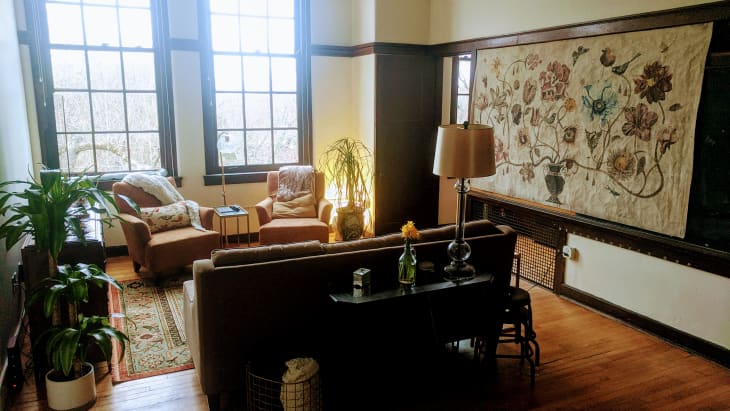3 Things to Know About Living in a Converted School, According to Someone Who Does

When Cincinnati resident Ashton Williams first glimpsed photos of an apartment for rent in a former school on the city’s Northside, she had already made up her mind that she’d live there. Williams immediately called the leasing office and offered to put down a deposit on the unit without even seeing it in person. (The leasing agent graciously assured her that she would be able to tour it before any money was exchanged.)
Finally entering the one-bedroom apartment in the 1910 building, which is listed on the National Register of Historic Places, was just the cherry on top for Williams.
“In person, I knew immediately,” she says. “So much bright sunlight, granite counters, and an in-closet washer and dryer. I was home!”
Ahead, Williams shares three things to know about living in a converted school.
You probably want to have positive associations with your school days.
That’s because her place still feels very much like a school, thanks to long, wide hallways and original, still-functioning tiled water fountains. Her unit features chalkboards that span the length of two walls in the living room, another board in her bathroom, labeled reading shelves in the kitchen, and a cork board in the closet.
“I can tell from the markings on the cork, that mine was the music room,” Williams says.
A spacious three-bedroom apartment in the building was created from the school’s auditorium. “It still has the original stage in the living area,” Williams says. Another (hopefully well-behaved) renter occupies the principal’s office.
Huge, old windows can be beautiful—and inefficient.
The original windows in Williams’ unit flood the place in natural light during the day. But when the sun sets? “I struggle to properly light the space,” she says. “An unexpected challenge has been no overhead lighting in my living and bedroom areas.”
The windows also happen to lack energy efficiency, and Williams says she sees that reflected in her utility bills. But she explains it’s still worth it—she loves how cozy she’s been able to make the former classroom feel by adding rugs and other textures.
An attraction to antiques and whimsy should supersede everything else.
There’s one thing that needs to come first when living in a National Historic Landmark.
“Your love of history and charm must outweigh any of the inefficiencies of a historical space,” she says.
Even though the windows could insulate better and Williams is not allowed to paint the walls, she is happy to look at her home’s many upsides. “I can’t paint at all, but I can put up removable wallpaper,” she says.
The school’s history might be its biggest perk of all.
“Take the time to learn the history of the building and the part the school played in the community,” Williams says. “It will really enrich your experience and provide meaning to all those little quirks you’re bound to stumble upon while living there.”